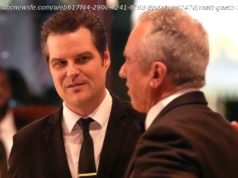Every four years the World Cup and Wimbledon collide, but rarely in recent decades has the focus of English fans been so divided.
WIMBLEDON, England — One notable result on Saturday was enough for the tennis fans at No. 1 Court. They had just watched Hsieh Su-wei topple the top-seeded Simona Halep in a 2-hour 20-minute, third-round match at Wimbledon that bled into the start of England’s World Cup quarterfinal match against Sweden 2,000 miles away in Samara, Russia.
Sure enough, as Hsieh was signing autographs for spectators gathered courtside, a wave of sound crashed over her. Harry Maguire had scored in the 30th minute to propel England to a 1-0 lead. As news of his goal spread throughout the show court, the initial roar gave way to a singsong chant, “Come on, England!”
So went the middle Saturday at Wimbledon, which became a sportsman’s dream and a fan’s logistical nightmare. The No. 1 players in tennis, Halep and Rafael Nadal, graced the show courts at the All England Club early; Kyle Edmund, the last British player left in the singles draw, played on Centre Court late; and in between, England’s men’s team tried to advance to the World Cup semifinals for the first time since 1990.
Tournament officials refused to surrender the clicker for the humongous video screen serving the picnickers on Wimbledon’s Henman Hill, which meant there would be no changing the tennis feed to the BBC broadcast of the soccer match. Fans, many of them, had to make a choice.
“It’s a shame they’re not showing the game here on the big screens,” said Brett Hitchen, who spent a few hours on the tournament grounds before heading out to watch the soccer at a nearby pub. “They would have had a good atmosphere.”
He shrugged. “I guess they have to keep their tradition,” he said.
Roughly 30 minutes before the opening kickoff in Russia, Hitchen had narrowly managed to skirt a bottleneck at one of the main gates. The staff had run out of the pink-and-purple wristbands that would allow exiting fans to re-enter the grounds, one steward explained. Normally, he added, there were hundreds of wristbands left over at the end of the day.
But nothing was normal about this day, from the temperatures in the high 80s to a soccer-crazed country on high World Cup alert.
True, every four years the World Cup and Wimbledon collide here, but rarely in recent decades has the focus of English fans been so divided. But England’s strong run this time around is forcing people to make tough decisions about what to watch. And if England should advance to next Sunday’s World Cup final, English fans will face the ultimate quandary: balancing the Wimbledon men’s final at Centre Court and the soccer match, scheduled to start two hours later.
“Nothing’s more important than the football,” said Tristan Colgate, one of two men who left their coveted Centre Court seats on Saturday after the first set of Nadal’s straight-sets victory over Alex de Minaur of Australia.
Colgate and his companion, Ben McGrail, collected their wristbands, exited the grounds and started walking purposefully in the direction of Wimbledon Village in search of a pub where they could watch England-Sweden.
They glanced at all the other people who were leaving and quickened their steps. “My worry isn’t that we’re missing tennis,” McGrail said. “I’m worried we won’t be able to get in anywhere to watch the game because all the pubs will be full.”
Some tennis fans decided to stay put and follow the soccer with other methods. They held tablets in their laps or buried their faces in their phones, hoping to stream the game on their devices while they absorbed the abundant sunshine along with the tennis unfurling all around them.
Charles Dackombe was stretched out on his side on a blanket near the top of Henman Hill, watching the soccer match on his tablet, which he had carefully positioned in the shade of a miniature umbrella.
“Best of both worlds,” said Dackombe, who added, “It’s streaming fine, but it’s a bit blurry.”
Not everyone was able to watch the soccer, as the demand for streaming appeared to strain the tournament’s bandwidth.
In the players’ lounge, dozens of competitors sat in seats clustered around a wall of three television sets that were tuned to the World Cup. Most appeared to be neutral observers, with the notable exception of Sweden’s Johanna Larsson, fresh off a women’s doubles victory and wearing the yellow jersey of her national team.
Nearby, a man napped on a couch facing two televisions that were tuned to matches taking place on the main Wimbledon show courts. One of those matches, the Centre Court clash between Angelique Kerber and Naomi Osaka, looked compelling on paper but was being played in front of a crowd that appeared to be one-third shy of capacity.
Kerber, a former world No. 1, secured the victory in 63 minutes. As she signed autographs on her way off the court, a loud cheer erupted, followed by shouts of “The Cup’s coming home,” the English fan base’s new rallying cry. England had just secured a 2-0 victory over Sweden to advance to the semifinals, and Wimbledon was celebrating.
All of that was hardly music to the ears of Kerber, a German whose revered national team stumbled out of the World Cup early.
The day went on. With England’s World Cup victory assured, with more tennis still to be played, fans filed back into Centre Court, filling it to capacity in hopes of capping the dizzying day with a rip-roaring nightcap.
Novak Djokovic, a three-time Wimbledon champion, was playing Edmund, who ripped forehands down the lines and in the corners to take the first set. The crowd was on its feet, whistling and shouting for the South African-born Edmund, Britain’s transplanted son.
By the time Djokovic put the finishing touches on his 4-6,6-3,6-2,6-4 victory, a sense of normalcy had returned. Tennis had the All England Club’s undivided attention again.






